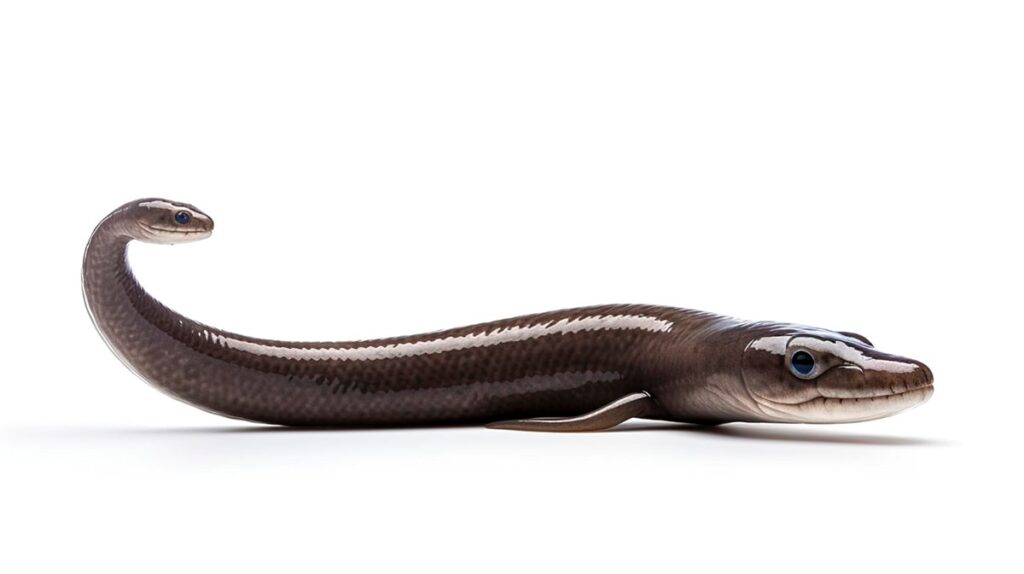1. Eel blood: Eel blood is toxic to humans, but the poison is neutralized both by cooking (with heat) and by the digestive process in our gastrointestinal system
2. Electric eels: An electric eel is not an eel, but a fish belonging to the knifefish family (Gymnotidae)
3. Skin: Eels don’t have scales, but instead have a soft skin covered in a layer of mucus that protects them from cuts and scrapes when swimming around reefs (although some eel species have very small scales)
4. Length: The length of eels can vary greatly from species to species; the shortest are as short as 5 cm and the longest up to 4 meters
5. Weight: Eels can weigh anywhere between 30 grams and 25 kilograms. The heaviest eel ever recorded was a conger eel (Conger conger) that weighed a whopping 110 kg and was 3 meters long

Fact: Some eel species swim up to 6,500 km to spawn, which can take up to 7 months – and on this journey they are not thought to eat at all!
6. Habitat: Most eels live in shallow water in the sea and bury themselves in sand or mud between rocks (e.g. in a reef)
7. Eel holes: Some eels live together in so-called “eel holes”
8. Freshwater sole: Only freshwater eels (Anguillidae) live in freshwater; and these also return to saltwater to spawn
9. Depth: Some eel species live in deep water as deep as 4,000 meters
10. Vertebrae: Eels have over 100 vertebrae, making them extremely flexible
Other facts about eels
- Classification: Eels are an order of fish, consisting of 20 families, 111 genera and around 800 species
- Predator: Most eels are predators and have very sharp teeth and powerful jaws
- Food: Eels eat almost all small animals in the sea, which includes: crustaceans, fish, squid, mussels and snails
- Eelskin leather: Eel skin leather is extremely expensive but does not come from eels; it is the skin of the Pacific hagfish (Eptatretus stoutii)
- Nocturnal animals: The majority of eel species are only active at night and are therefore rarely seen by humans
- Spawning: Some eel species swim up to 6,500 km to spawn, which can take up to 7 months. During this period, eels are not thought to eat; instead, they consume the nutrients in their body fat and muscle tissue
- Caterpillars: Eel larvae start their lives floating with ocean currents. It takes them 3 years to become fully grown


